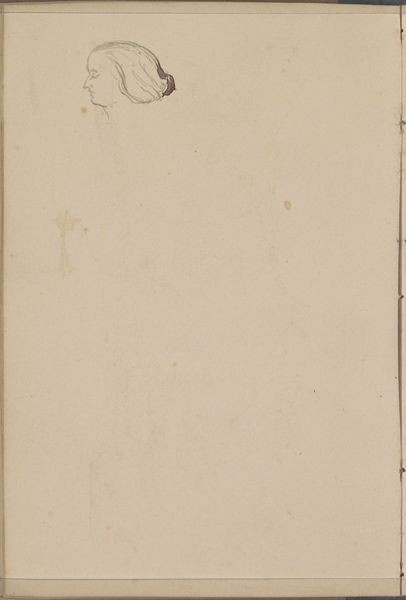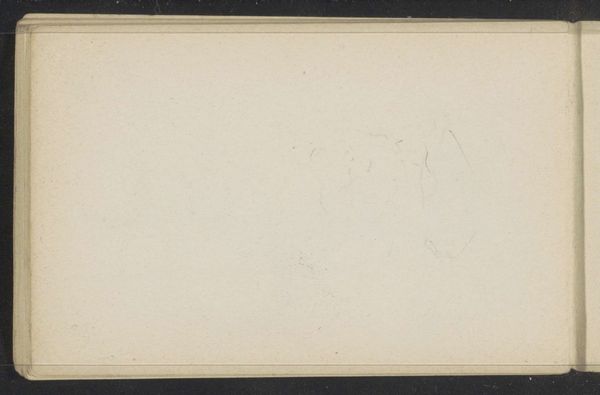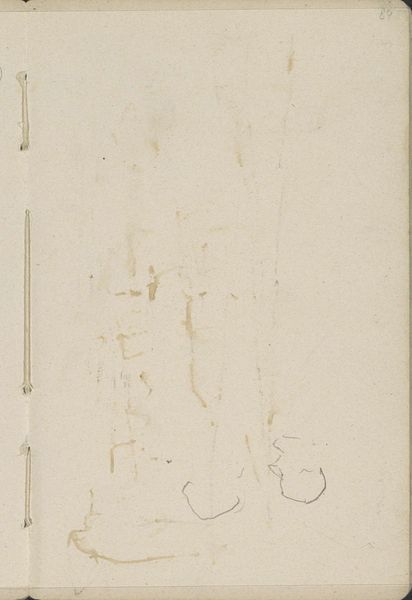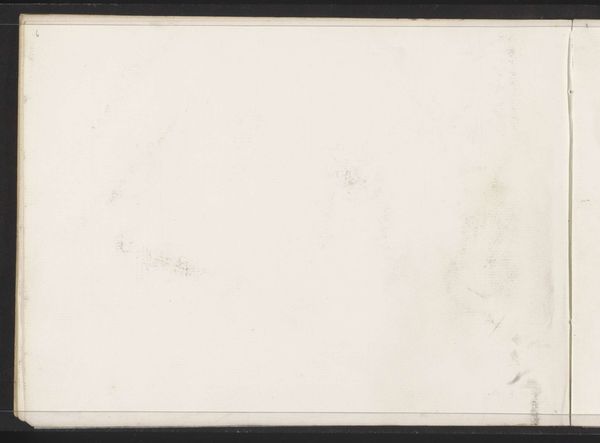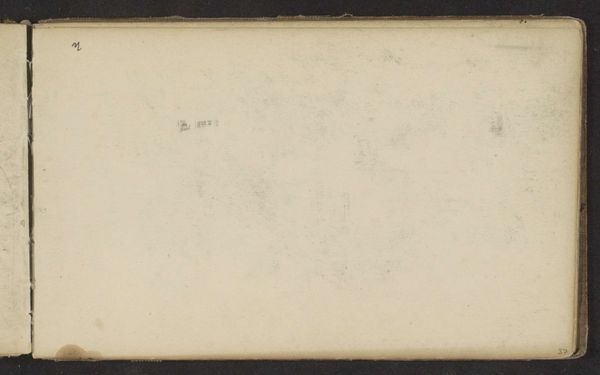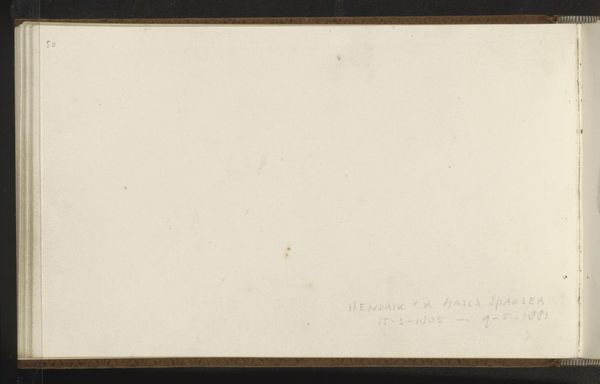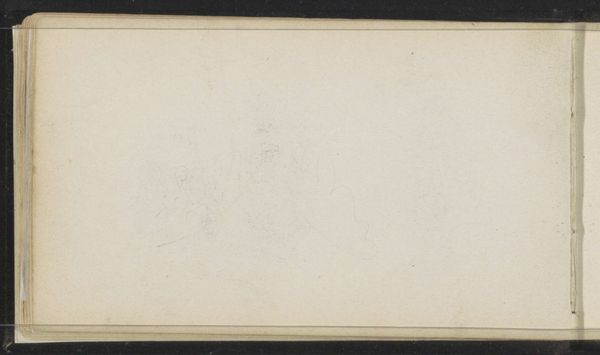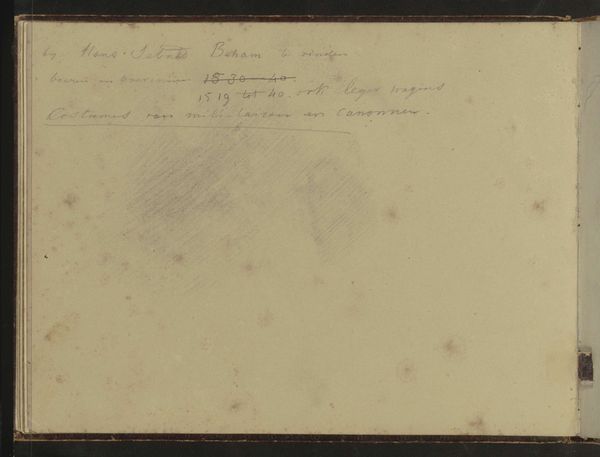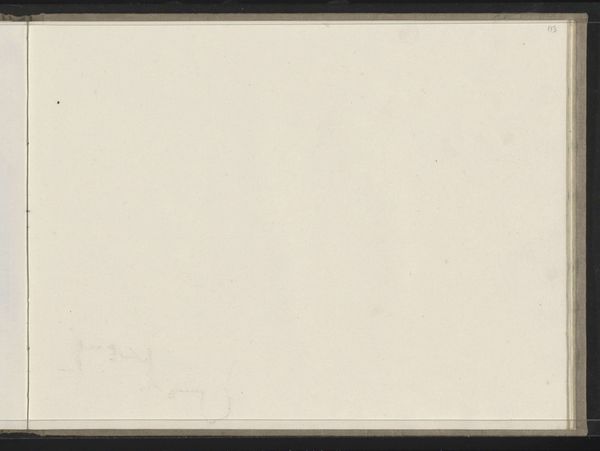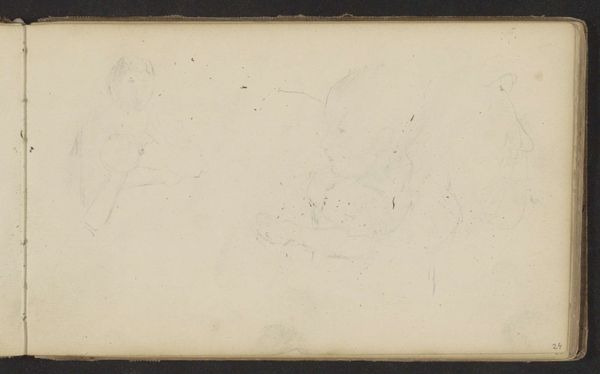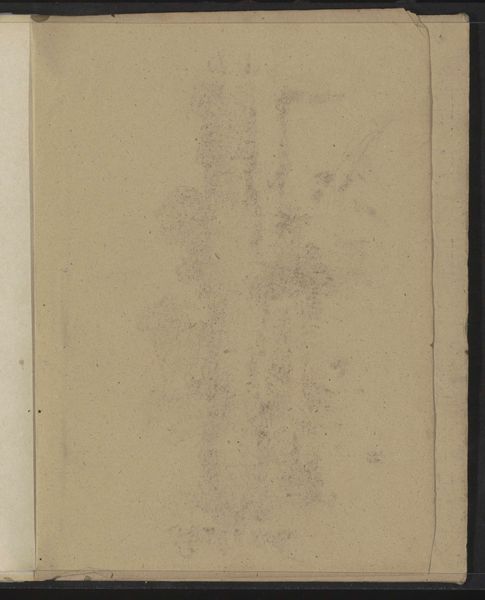
drawing, paper, pencil
#
drawing
#
impressionism
#
sketch book
#
landscape
#
figuration
#
paper
#
sketch
#
pencil
Copyright: Rijks Museum: Open Domain
Editor: This is a pencil drawing on paper, a "Studie," or study, by Jozef Israëls, created sometime between 1834 and 1911. It feels almost ephemeral, just a faint trace. What do you see in this piece? Curator: I see the trace of a human figure and a landscape – gestures, really. Israëls, working in a time of immense social upheaval and changing power dynamics, wasn't simply sketching what he *saw*. What power structures are being reproduced in this quiet scene? Consider who has historically been permitted to rest, to be contemplative, to create... and who has not? Editor: I hadn’t thought about it in terms of power before, but that makes sense. It does seem like there’s a lot *not* there, intentionally. Curator: Exactly. Israëls, deeply engaged with social realism, gives us not just an image, but a space for questioning. Whose stories aren't being told? Who is absent from this sketch? And perhaps most importantly, what does this absence reveal about the artist's own position and the dominant narratives of the time? The sketch feels very immediate and raw; who do you imagine is the subject of this portrait? How might this impact or create additional meaning? Editor: Possibly a farm worker or someone of the working class. Thinking about what's absent really opens up what feels like a simple drawing. Thanks for that! Curator: My pleasure. Art provides a rich opportunity to challenge and rethink ideas around history, identity, and social issues, prompting us to consider whose stories we tell and how we tell them.
Comments
No comments
Be the first to comment and join the conversation on the ultimate creative platform.
